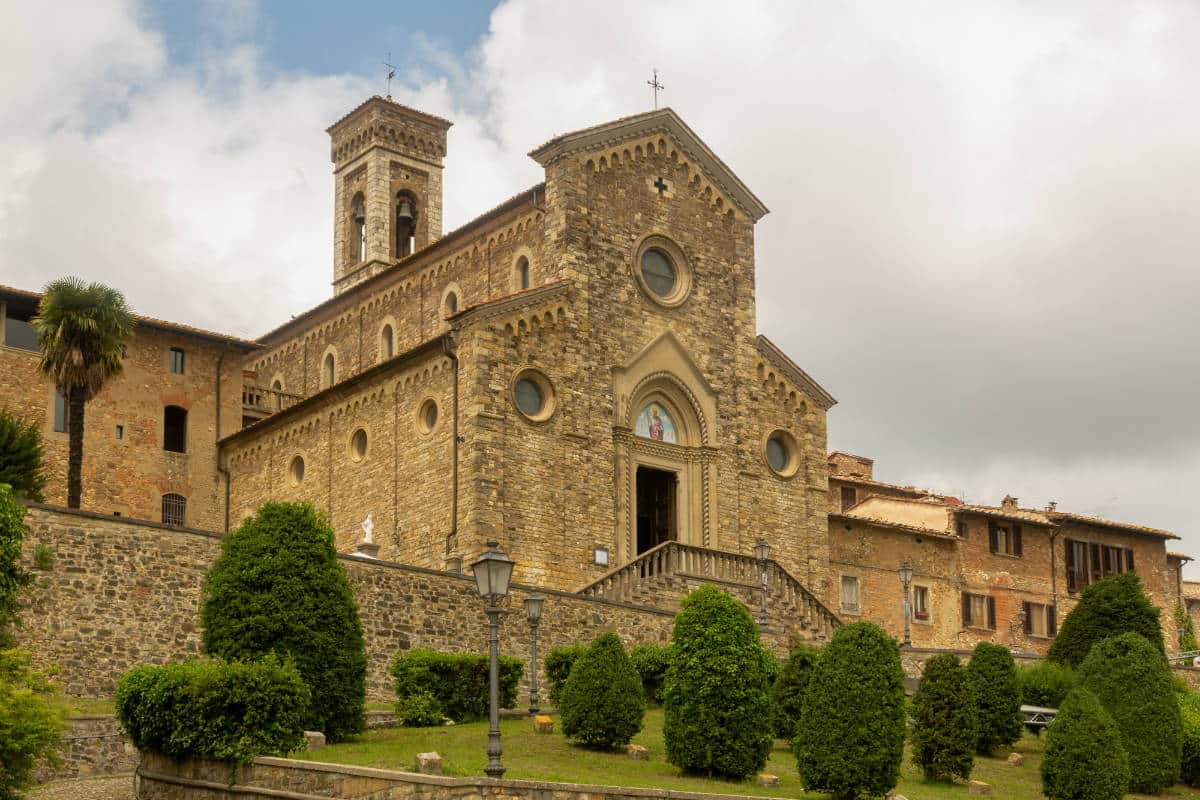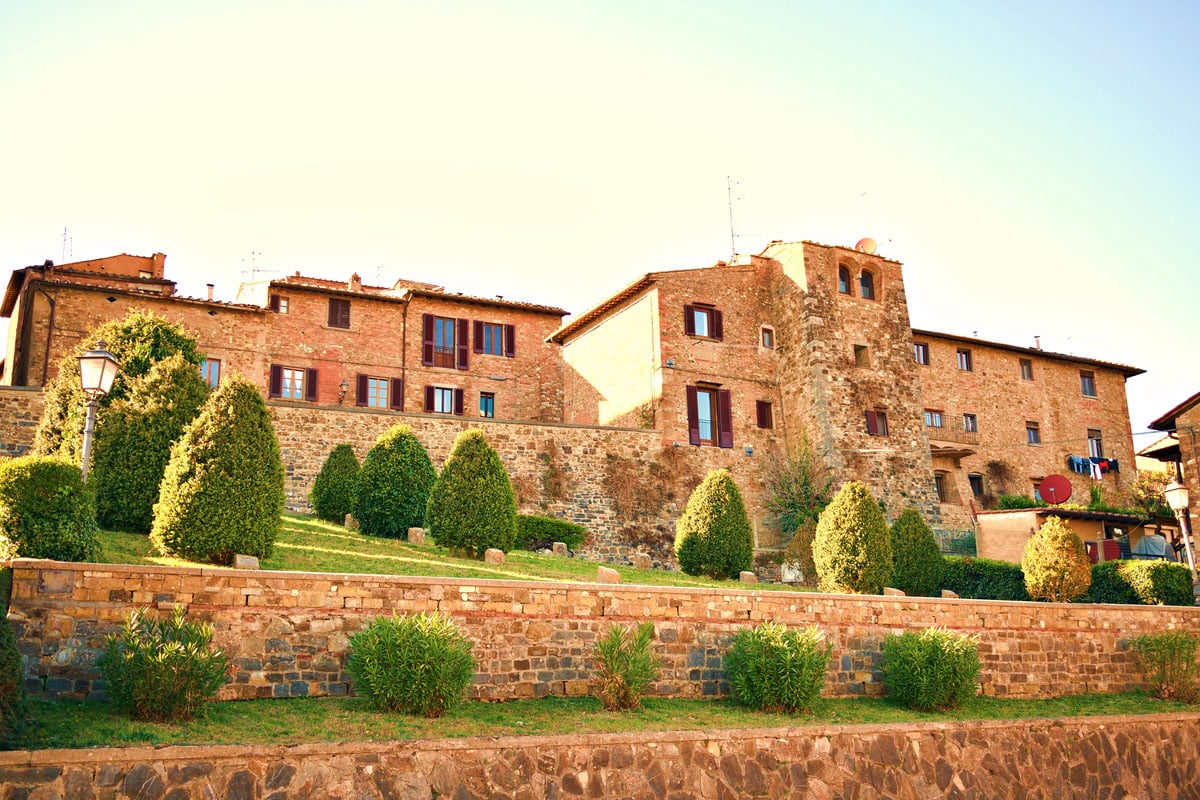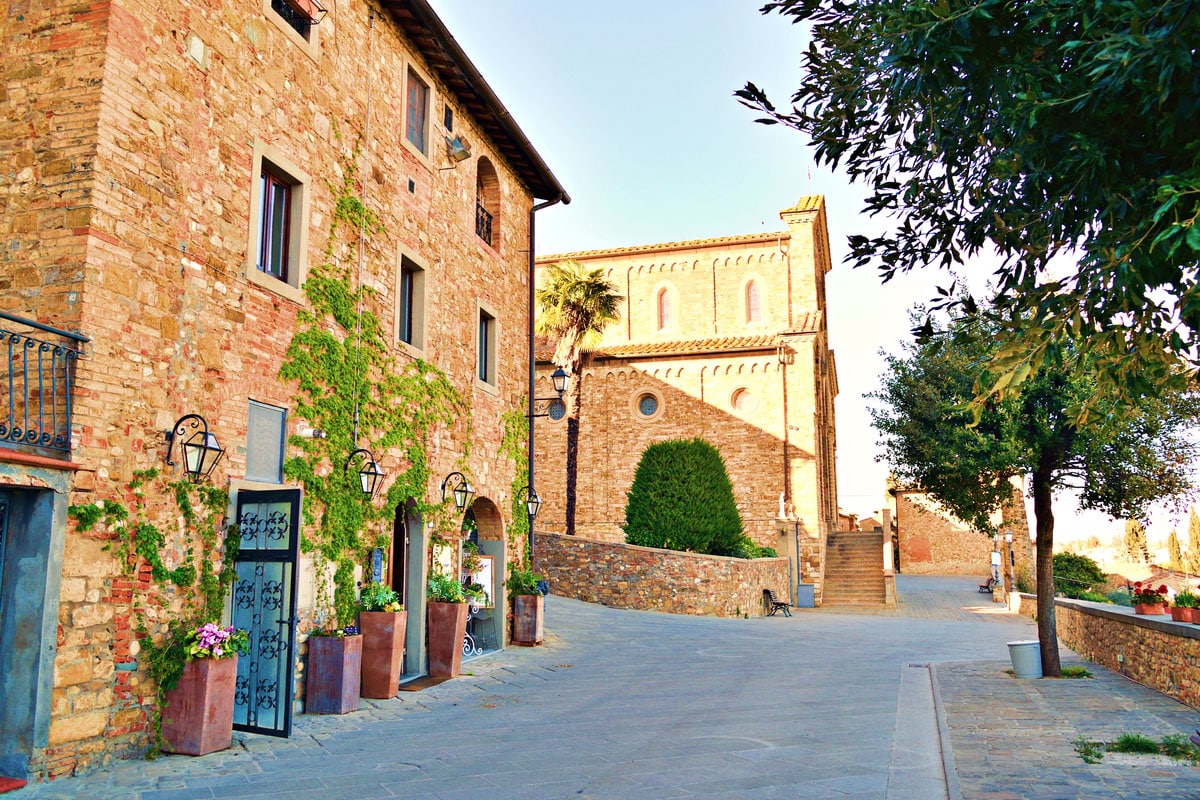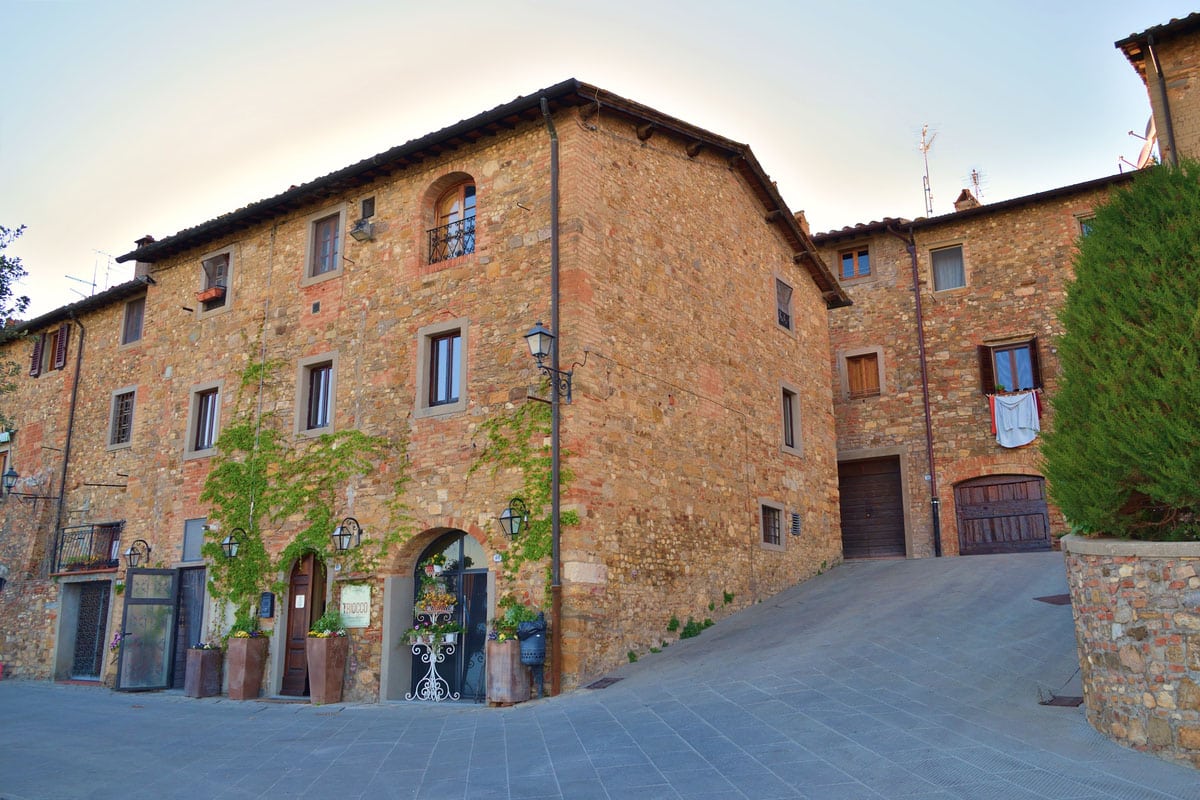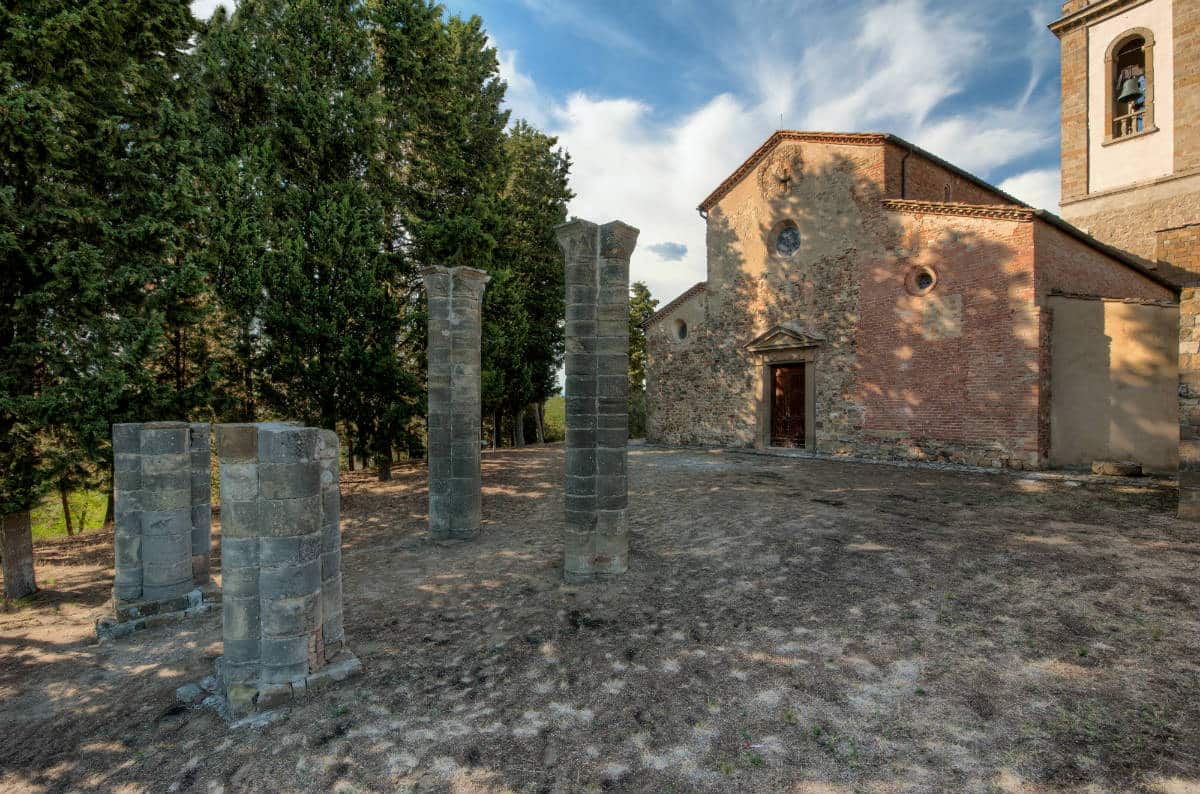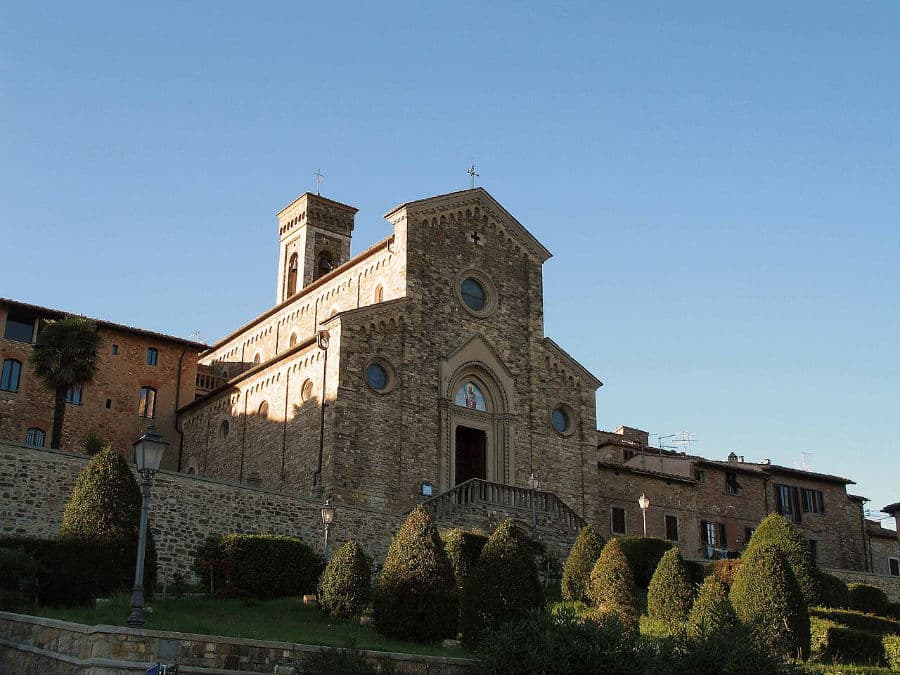The story of Barberino Val d'Elsa in Tuscany is linked to the destruction of Semifonte by the Florentines in 1202. Its development, on the other hand, is that of being on the Roman Regina Road connecting Florence with Rome. The village is characterized by an elongated shape, within which the main road reaches the center by connecting the two major access points to the city. Coming from the Porta Senese to the south, well preserved, we are in via Francesco da Barberino, where there are several interesting buildings with beautiful wooden gates and limpid stone walls which, according to legends, are exactly those of Semifonte's rubble. To the left of the entrance is the Palazzo del Cardinale, where on the front door you can see the coat of arms of the bees, that of the Barberini, the powerful family of Pope Urbano VIII. Continuing on the main street, we meet on the right the Palazzo Pretorio, currently prepositions of San Bartolomeo, with a Renaissance facade decorated with the 35 coat of arms belonging to the most important families of Florence, most of them carved in serene stone with some example in engraved ceramic robbian bill . The characteristic urban layout makes us admire the back of the Church of St. Bartholomew. Barberino's position on the crossroads leading to the Via Francigena has always made this village a welcoming and restful place for travelers and its inhabitants took care of pilgrims. In fact near Porta Fiorentina is the Spedale dei Pellegrini, built in 1365 by Taddeo of Cecco, son of the notary poet Francesco da Barberino. Recently restored the ancient building is characterized by a beautiful 14th century archiacut portal that overlooks the square of the same name. Continuing to walk, you reach the Church of St. Bartholomew.
In its territory we can meet the medieval archeological site of Semifonte, which derived its name from the corruption of the Latin summos fons, spring on the top, since it lay right on the top of a hill. Semifonte knew in a short time the birth, the power and the definitive oblivion. In 1181, Count Alberto degli Alberti, in order to counteract the Florentine expansion, undertook the construction of a fortress that dominated Via Volterrana and Via Francigena: this castle was transformed into a powerful village, defended by three kilometers of bastions, with four doors, a doormat, seven churches and three hundred dwellings. From the beginning Florence, alarmed by the strategic location of the new fortress, attempted to counteract its growth, but the urban and economic development of the new settlement was rapid so that at that time at Semifonte were singing "Va Firenze, made in there Semifonte is a city. " Even Dante, in Heaven, cites it as a center of primary importance. "If the people in the most bizarre world had not been to Cesare Noverca, but as a mother to her benign son, such a thing is Florentine and it changes and merchandise, which would have turned to Simifonti, where he was looking for" . (Dante Alighieri, Paradiso XVI, 58-63)
Florence could not allow the Semifontes, brave fighters and skilled merchants, to expand at his own expense, and never interrupted hostilities. At first Semifonte could enjoy the help of the small neighboring cities, such as Colle and San Gimignano, as opposed to Florentine hegemony, but in the year 1200, Count Alberto IV, in order to save the rest of his feudal domains, agreed with the Commune of Florence selling it for four hundred pounds its half of the rights to the castle. Diplomatic isolation and famine, the use of terrible war machines and Greek fire eventually led to the rendering of the fortress in 1202. The inhabitants saved their lives, but the city was rocked on stone stone. The demolition lasted for years and the stone material was recovered and used to erect a powerful wall in Barberino Val d'Elsa. Destruction survived only today's inhabited area of ""Petrognano, as it was outside the city's wall circuit: it is the so-called "Borgo", which in fact was also fortified, and which during the siege was conquered first by the Florentine militias. Today you can see the structures of three houses - towers and some bastions.
Semifonte did not even remember. For four centuries the law forbidding to build on the lands where Semifonte had arisen was in force, until in 1597, on the project of Saints of Tito and by the will of John the Baptist by Neri Capponi, who obtained from Grand Duke Ferdinand I a special derogation erected, where once was the central square of the country, an octagonal plan dedicated to San Michele, which reproduced in perfect scale one to eight that of Santa Maria del Fiore in Florence, raised by Brunelleschi.
Of the city are hidden by the vegetation some ruins such as furnaces and some chapels containing springs. The so-called Fonte del Latte is so beautiful.


